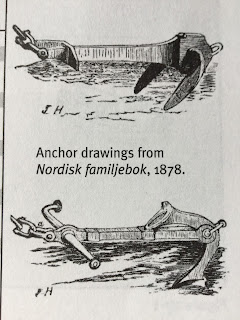It’s great to arrive at an anchorage early in the day. Not only does it simplify the job of anchoring with fewer boats around to consider, but it gives us the opportunity to watch other boats go about the task as they arrive. Some make us want to cringe; others we can learn from.
Consider two very different anchoring styles demonstrated after our arrival to Grace Harbor in Malaspina Inlet. The anchorage is well protected, but the winds can still kick up a bit and push the anchored boats around.
The first, one I witnessed, an elderly couple arrived in their cabin cruiser, slowly motored to a point midway between three existing boats (one was ours), and dropped their anchor until it hit the bottom: 40’ chain for 35’ depth. Since the chain needs to be pulled horizontally to set the anchor, we’ll call this the “anticipating perfect weather technique.” It’s a forecast that has held up remarkably well so far tonight. Since their arrival this afternoon there has been hardly a breath of wind. If the wind does kick up, they’ll be up on deck in their pajamas letting out more chain to allow their anchor to set properly.
The second technique, one Bob witnessed, we’ll call the hurricane set. According to Bob, they dropped their anchor, let out an appropriate amount of chain, and powered up to full throttle, tearing the anchor out of the bottom of the bay. While this technique sounds a little crazy, it has some merit. Sure they had to reset their anchor and try again, but they do have a better sense of what it takes to drag the anchor in this bay than someone like me does, who applies a moderate amount of power to set the anchor, but stops short of pulling it out.
(Image courtesy of Kevin Monahan, author of Local Knowledge)



